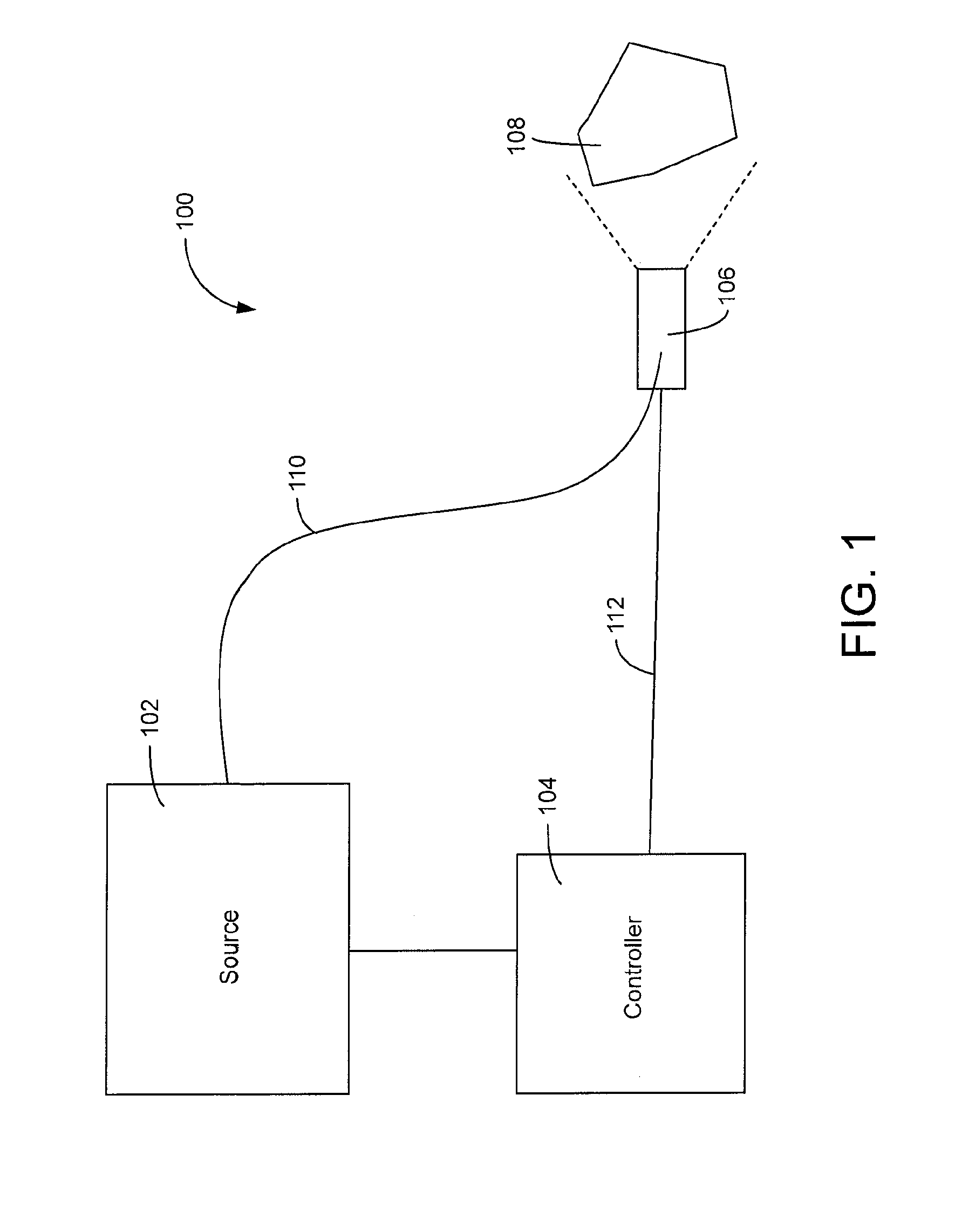Pulsed therapeutic light system and method
a technology of therapeutic light and light source, which is applied in the field of pulsed therapeutic light system and method, can solve the problems of relatively low power density of leds and insufficient power density of typical state of the art leds to achieve effective thermal effects
- Summary
- Abstract
- Description
- Claims
- Application Information
AI Technical Summary
Benefits of technology
Problems solved by technology
Method used
Image
Examples
Embodiment Construction
[0030]Referring generally to the figures, systems and methods for delivering therapeutic light to a treatment region using light emitting diodes (LEDs) is shown. The LEDs may be driven in a pulsed mode to provide power that is above the normal continuous operating level for the LEDs. The LEDs may be turned on at the increased operating level for a short period of time (e.g., from 0.5 to 50 ms), followed by a longer period of time (e.g., hundreds of milliseconds) between pulses, allowing the accumulated heat from the on time to dissipate. This allows for the LED source to be used a suitable light source for a light based dermatological treatments in place of lasers and IPLs. The therapeutic light may heat the treatment region such that the heating results in a chemical or physical change to the tissue in the treatment region (e.g., an ablation, cauterization, melting, shrinkage, lipolysis, thermal damage, or another chemical or physical change). The tissue may include collagen, and t...
PUM
 Login to View More
Login to View More Abstract
Description
Claims
Application Information
 Login to View More
Login to View More - R&D
- Intellectual Property
- Life Sciences
- Materials
- Tech Scout
- Unparalleled Data Quality
- Higher Quality Content
- 60% Fewer Hallucinations
Browse by: Latest US Patents, China's latest patents, Technical Efficacy Thesaurus, Application Domain, Technology Topic, Popular Technical Reports.
© 2025 PatSnap. All rights reserved.Legal|Privacy policy|Modern Slavery Act Transparency Statement|Sitemap|About US| Contact US: help@patsnap.com



